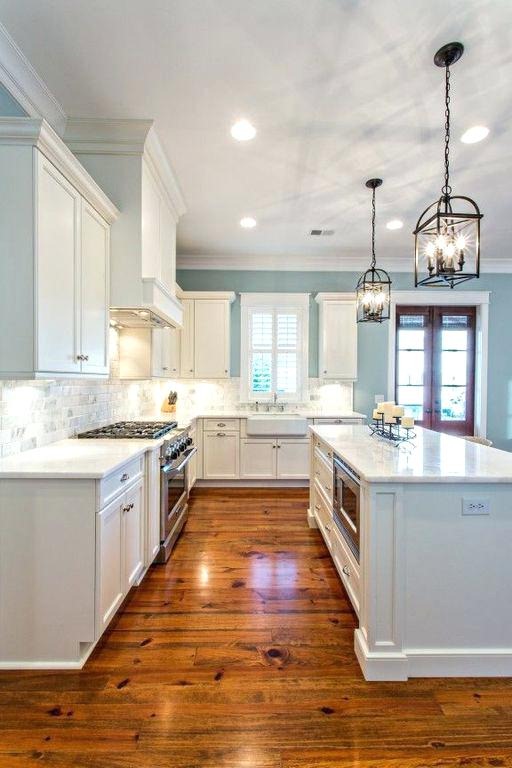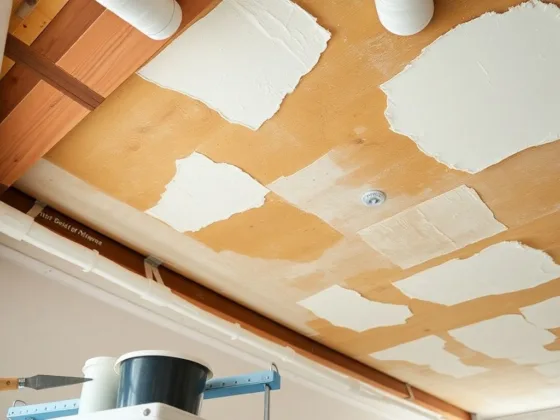Crown moldings will add a degree of elegance to kitchen cabinets, and can be accomplished with intermediate carpentry skills. Learn how to install crown molding on your kitchen cabinets. Be advised, however, that a fairly extensive set of tools is necessary for this project.

A General Guide on How to Install Crown Molding on Kitchen Cabinets
Learn how to install crown molding on kitchen cabinets with this general guide covering the installation from start to finish. The required tools, general techniques, and finishing the installation are discussed.
Tools Required for Crown Molding Installation
To install crown moldings on your kitchen cabinets, you should have the following tools:
- Table saw
- Miter saw
- Finish nailer and compressor
- Coping saw
- Carpet knife or other sharp knife
- Caulking gun

Installing Nailer Strips
Start by assessing the cabinets. Unless there is ample room above the doors to attach a crown molding, or if you are using a very wide crown molding, you will need to install a nailer strip to support the installation. You can use 1” x 4” lumber, and rip these into two or three strips.
These should then be nailed to the top of the cabinets (drive nails from the inside of the cabinet) and they should be flush with the face of the cabinets.
If you are using very wide crown molding, you can also use 2” x 4” to support the installation by ripping it in half (into 2” x 2” pieces) and then ripping each piece to the angle of the crown molding installation on one edge (usually 45 degrees).
This will help keep the alignment of the molding constant. It may be necessary to install additional spacers to align these strips to the correct height. Test the application with a small piece of crown molding for clearance over cabinet doors before you attach anything.
Must Read:
Installing the Crown Molding on Kitchen Cabinets
Once your supporting nailer strips are installed, the crown molding installation can start. First, if you’ve never cut crown molding before, then you will need to make practice cuts.
Crown molding needs to be cut by setting it against the saw fence and the table of the miter saw at the correct angle and making the cut in the reverse direction of how it would intuitively seem, upside-down. There are several informational sites and videos on this topic, which is unfortunately too in-depth to cover here.
Start the installation from one end, and work your way to the other. Do not work from two directions, as this will unnecessarily complicate the process.
The easiest way to measure the pieces of molding is by making any necessary cuts on one end, fitting the piece in place, and marking the spot for the next cut with a pencil.
You should also have pieces handy that are cut for 45-degree inside and outside angles so that you’ll be able to check each piece that you install as you progress. Do not attach anything without making sure that it has been cut correctly. Apply a bead of caulk to the back of each molding before attaching it with nails, and make sure that the installation stays level.
Use the coping saw and knife to cut the inside edge if pieces aren’t fitting together well at inside angles.
Finishing the Installation
Finish the installation by caulking seams and filling in nail holes. If there are nails that stick out, use a nail punch to drive these in.
Note that if you are planning on staining the molding, do not use caulk or putty until after you’re finished staining. Some types of putty will turn out a completely different color than the wood, and will stick out. Match a putty to the stain afterward for best results.
If you are painting, or using moldings that are a factory match to your cabinets, use the closest matching caulking. You can even mix caulk to a custom color when filling in nail holes.
This is a general guide on how to install crown molding on kitchen cabinets, and not exhaustive of all of the steps and techniques. If you are not sure of your skills or have never worked with crown molding before, then it is advisable to make sure to understand the cutting techniques and the angles involved before attempting this installation.










